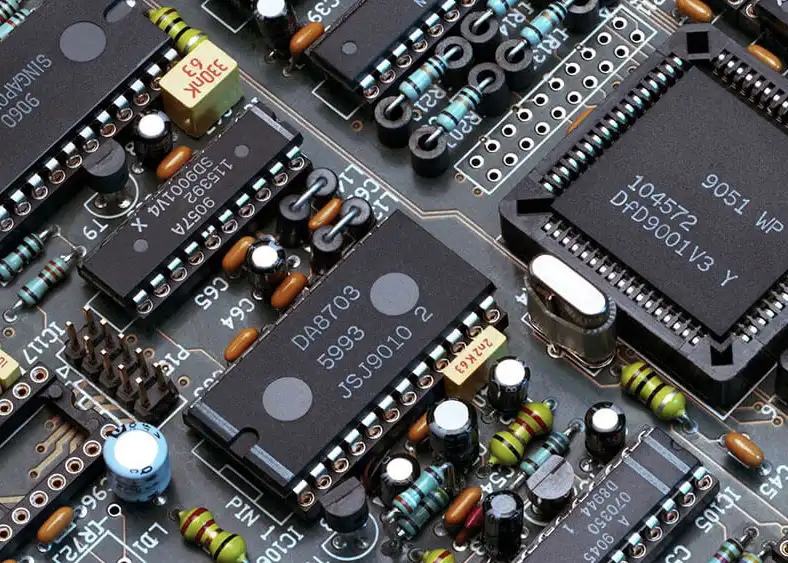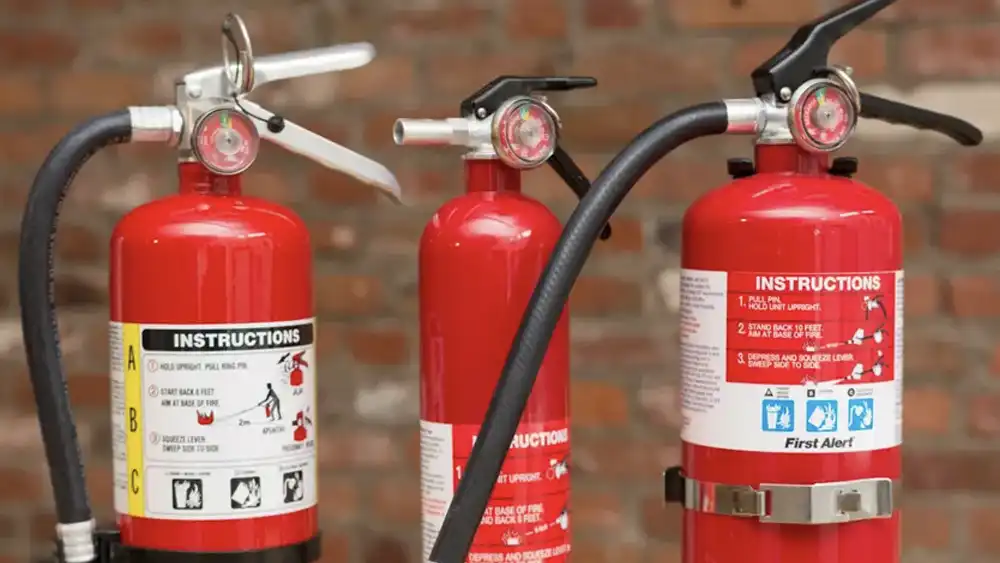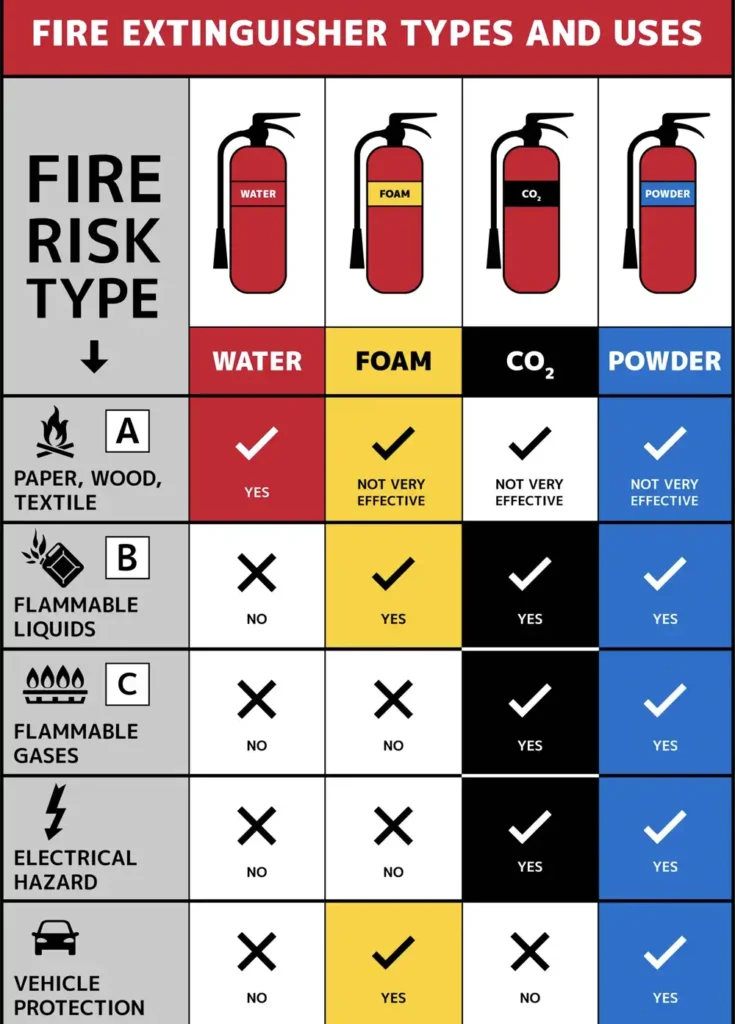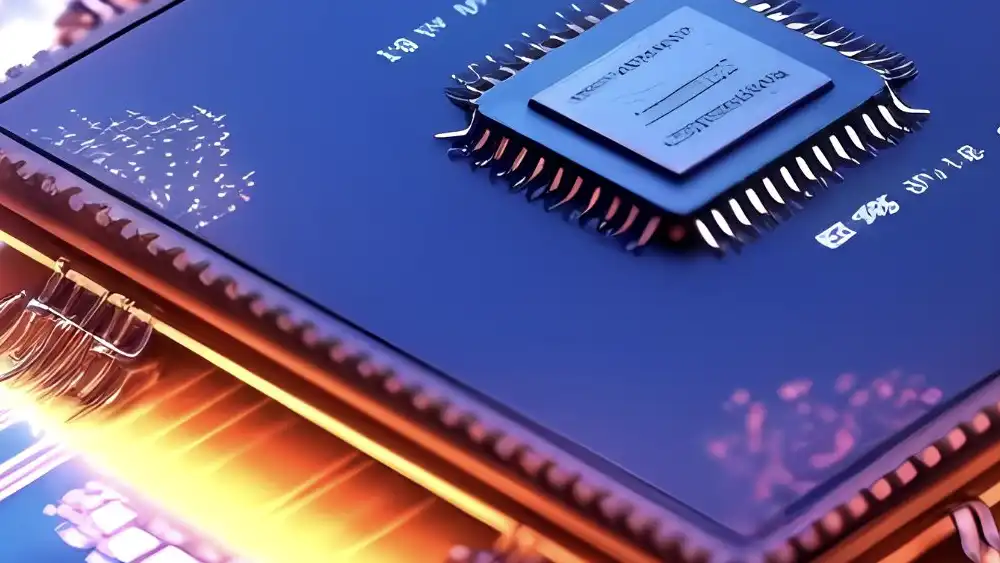Fire safety is the initial aspect for the places where use electronic components. So understanding the proper use of fire extinguishers is super important for preventing fires for the electronics components.
So, which type of fire extinguisher may damage electronic components? In this guide, let’s know more about how to choose the right type of fire extinguisher.
What Are Electronic Components

Electronic components are integral to modern life, present in everything from household appliances to industrial machinery.
These electronic components are highly susceptible to damage from heat and fire. The intricate circuits and delicate materials within electronic devices make them vulnerable to even small fluctuations in temperature.
What Is Fire Extinguish?

A fire extinguisher is a portable device designed to extinguish small fires or control them until professional firefighters arrive. It typically consists of a hand-held cylindrical pressure vessel containing an extinguishing agent under pressure.
When activated, the extinguisher releases the agent onto the fire, either by means of a pressurized gas or a mechanical pump. The agent could be water, foam, dry chemical, carbon dioxide (CO2), or other substances specifically formulated to extinguish or control fires.
Different types of extinguishers are effective for different classes of fires (e.g., Class A, B, C, D, or K), depending on the materials involved in the fire.
Types of Fire Extinguishers

There are several types of fire extinguishers, each designed to tackle different classes of fires.
The most common types of fire extinguishers include:
- Water-based fire extinguishers: Suitable for Class A fires involving ordinary combustibles like wood and paper.
- Carbon dioxide (CO2) fire extinguishers: Effective for Class B and C fires, which involve flammable liquids and electrical equipment, respectively.
- Dry chemical fire extinguishers: Versatile extinguishers suitable for Class A, B, and C fires.
- Foam fire extinguishers: Ideal for Class A and B fires, forming a barrier to smother flames.
Which Type Fire Extinguisher May Damage Electronic Components
While fire extinguishers are invaluable for combating fire, and here are some certain types of fire extinguishers can pose risks to electronic components:
- Water-based extinguishers are highly conductive and can cause short circuits and electrical shocks when used on electronic equipment.
- Dry chemical extinguishers leave behind a corrosive residue that can damage electronic circuits and components.
- CO2 extinguishers, although safe for electrical fires, can subject sensitive electronic components to thermal shock due to rapid cooling.
Guidelines for Protecting Electronic Components During Fire Emergencies

Guidelines for Protecting Electronics During Fire Emergencies are crucial to minimize the risk of damage to electronic devices and ensure the safety of individuals in the vicinity. Here are some important guidelines to follow:
Fire Prevention Measures: Implement preventive measures to reduce the likelihood of fires occurring near electronic devices. This includes regular maintenance of electrical systems, proper storage of flammable materials away from electronic equipment, and ensuring that electrical outlets and wiring are in good condition.
Use of Fire Blankets: Fire blankets can be used to shield electronic devices from direct exposure to flames and heat. In the event of a fire, carefully place a fire blanket over the affected area, ensuring that all electronic devices are covered. This can help prevent heat damage and reduce the risk of fire spreading to nearby equipment.
Emergency Evacuation Protocols: Establish clear emergency evacuation protocols to ensure the safety of individuals in the event of a fire emergency. Designate evacuation routes and emergency assembly points, and ensure that all occupants are familiar with these procedures. In the event of a fire, prioritize the evacuation of individuals over the protection of electronic devices.
Unplugging Electronic Devices: If it is safe to do so, unplug electronic devices from power sources during a fire emergency. This can help prevent electrical surges and minimize the risk of damage to the devices. However, only attempt to unplug devices if it can be done safely and without risking personal safety.
Proper Storage of Backup Data: Regularly backup important electronic data and store it in a secure location away from the primary workspace. In the event of a fire emergency, having backup copies of essential data ensures that critical information is not lost.
Communication and Training: Provide training to occupants on fire safety procedures, including guidelines for protecting electronic devices during fire emergencies. Ensure that all individuals are aware of the location of fire extinguishers, fire blankets, and emergency exits, and know how to use them effectively.
By following these guidelines, individuals can minimize the risk of damage to electronic devices during fire emergencies and ensure the safety of everyone in the vicinity. It’s essential to be prepared and proactive in protecting both lives and valuable electronic equipment.
Conclusion
Choosing the right fire extinguisher is crucial for effectively managing fires involving electronic components. By understanding the risks associated with different types of extinguishers and implementing appropriate safety measures, individuals can safeguard both lives and valuable electronic equipment.
FAQs
- Can I use a water-based fire extinguisher on a fire involving electronic equipment?
- No, using a water-based extinguisher on electronic fires can cause further damage due to electrical conductivity.
- Are there any fire extinguishers specifically designed for electronic fires?
- While there are extinguishers labeled as suitable for electrical fires, it’s essential to choose one that minimizes the risk of damage to electronic components, such as CO2 extinguishers.
- How can I protect my electronic devices from fire damage?
- Implement preventive measures such as using surge protectors, keeping devices away from flammable materials, and having fire extinguishers suitable for electronic fires nearby.
- What should I do if a fire breaks out near my electronic equipment?
- If it’s safe to do so, unplug the devices and move them away from the fire. Otherwise, evacuate the area and contact emergency services immediately.
- Can fireproof cabinets or safes protect electronic devices during a fire?
- Fireproof cabinets or safes can provide some level of protection against fire damage, but it’s essential to ensure they are specifically designed for electronic storage and adequately rated for fire resistance.